Nel panorama digitale odierno, i siti web compromessi sono diventati una piattaforma redditizia per gli hacker che vogliono iniettare annunci indesiderati, spesso causando perdite finanziarie ai proprietari dei siti. Questo post del blog approfondirà le tattiche che gli hacker usano per monetizzare i siti compromessi tramite annunci non autorizzati e metterà in evidenza l'importanza di misure di sicurezza robuste per prevenire tali attacchi.
Come gli hacker iniettano annunci pubblicitari non autorizzati
Gli hacker impiegano vari metodi per iniettare annunci pubblicitari non autorizzati in siti Web compromessi. Una tecnica comune prevede l'utilizzo di reti pubblicitarie più piccole che rivendono il traffico a reti più grandi. Questo processo, noto come offuscamento tramite reindirizzamenti di reti pubblicitarie, aiuta gli hacker a evitare il rilevamento rendendo difficile per le reti pubblicitarie tracciare l'origine del traffico dannoso.
Un altro metodo prevede l'abuso di piattaforme pubblicitarie note come Google AdSense. Gli hacker creano nuovi <div> elementi contenenti Google Ads e posizionarli sopra il contenuto legittimo della pagina. Questi annunci sono progettati per essere persistenti, anche quando la pagina viene ridimensionata o fatta scorrere, assicurando che rimangano visibili e cliccabili.
La persistenza del malware
Le campagne malware che iniettano annunci pubblicitari non autorizzati spesso si basano sulla persistenza per generare valore per i loro creatori. Il codice dannoso che viene facilmente rilevato e rimosso non fornisce entrate sufficienti per gli aggressori. Pertanto, utilizzano tecniche creative di backdoor e metodi di offuscamento unici per estendere la durata dei loro attacchi.
Deturpazioni e iniezioni pubblicitarie
I siti compromessi non si limitano solo alle iniezioni di annunci; possono anche essere deturpati dagli hacker. In alcuni casi, il codice di deturpazione viene iniettato nella stessa sezione del <script> come il codice di clickjacking di AdSense. Ciò indica che gli aggressori sono versatili nei loro metodi e possono adattarsi a diversi tipi di infezioni.
Infezioni tra siti
L'infezione non è limitata a WordPress; può colpire anche altre piattaforme come Magento e Joomla. Questa versatilità dimostra che gli aggressori non si affidano a un singolo vettore di infezione, ma piuttosto prendono di mira qualsiasi sito in cui riescono a entrare.
Monitoraggio per l'integrità
Per combattere questi attacchi, i proprietari di siti dovrebbero monitorare regolarmente l'integrità dei loro siti web. Ciò include il controllo degli script degli annunci per eventuali modifiche e la garanzia che gli ID AdSense sulle pagine del sito siano legittimi. Inoltre, aprire il sito su dispositivi diversi e chiedere ai visitatori da diverse posizioni di eventuali comportamenti insoliti può aiutare a identificare potenziali problemi.
Conclusione
I siti web compromessi sono una piattaforma ideale per gli hacker per installare annunci pubblicitari di terze parti non autorizzati. Il malware può creare pop-up, aggiungere nuovi blocchi pubblicitari o persino sostituire gli ID delle reti pubblicitarie per rubare entrate ai proprietari dei siti. Per proteggersi da tali attacchi, è fondamentale monitorare l'integrità dei file dei siti web ed essere vigili su eventuali modifiche.
Perché hai bisogno di una soluzione di sicurezza solida
Alla luce di queste minacce, avere una soluzione di sicurezza robusta è essenziale. Ecco alcune caratteristiche chiave che dovresti cercare in un plugin di sicurezza:
- Monitoraggio dell'integrità: Esegui regolarmente la scansione dei file del tuo sito web per individuare eventuali modifiche.
- Monitoraggio degli script degli annunci: Controlla gli script dei tuoi annunci per eventuali modifiche non autorizzate.
- Test di compatibilità del dispositivo: Assicurati che il tuo sito si comporti normalmente su diversi dispositivi.
- Integrazione del feedback degli utenti: Incoraggiare i visitatori a segnalare qualsiasi comportamento insolito.
Integrando queste funzionalità nella tua strategia di sicurezza, puoi ridurre significativamente il rischio che il tuo sito venga compromesso e monetizzato da annunci pubblicitari non autorizzati.
Proteggi il tuo sito con WP-Firewall
Per proteggere il tuo sito WordPress da annunci pubblicitari non autorizzati e altre attività dannose, prendi in considerazione l'utilizzo di WP-Firewall. Questo plugin offre funzionalità di sicurezza avanzate progettate per monitorare l'integrità del tuo sito, rilevare modifiche non autorizzate e prevenire iniezioni di annunci pubblicitari.
Iscriviti oggi stesso al piano gratuito di WP-Firewall e inizia a proteggere il tuo sito da pubblicità non autorizzate e altre minacce informatiche. Inizia qui(https://my.wp-firewall.com/buy/wp-firewall-free-plan/)!
Comprendendo le tattiche che gli hacker usano per monetizzare i siti compromessi e implementando misure di sicurezza robuste, puoi ridurre significativamente il rischio di cadere vittima di questi attacchi. Ricorda, la vigilanza è fondamentale nel panorama digitale odierno.

